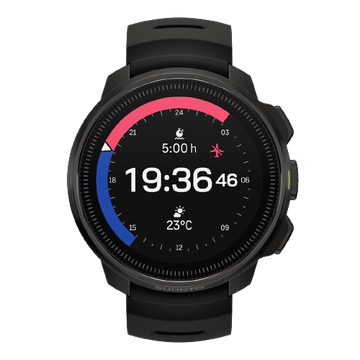Many athletes and coaches head to the track for speed work; however, for triathletes and distance runners, there is a more important workout. I call this a pacing session.
Pacing for distance runs and triathlons is one of the most critical components of successful racing, and yet most never spend a concerted effort “dialing it in”. Why is that? Well, with most athletes glued to their Heart Rate Monitor (HRM) devices, the majority use this feedback as the primary means to pacing their runs. While valuable, it is critical to “learn the body through the mind”, and use your personal biofeedback techniques to stay within an intensity level appropriate to the race distance, course, and conditions.
By raising awareness of and learning your Perceived Exertion (PE), as well as your onset and sweat rates for various conditions and hydration levels, and how they alter within the eight training zones (but especially Sub-Lactate Threshold through VO2max), you can dial in you optimal sustainable pacing. Remember, especially when relying on HR as a performance indicator, that HR is affected by many things. Heart rate may be elevated by physical issues like inadequate recovery, hydration, caffeine, glycogen storage levels, psychological and emotional stress load. It can also be affected by outside elements like ambient temperature, humidity, wind, altitude, and terrain.
When I am with an athlete at the track, I prefer that they not focus on their HR, and only refer to it at specific times. By having them focus on PE, they can learn to gauge pacing more reliably. This is an important skill to learn across the spectrum of conditions and intensities. Once learned, it makes sustainable pacing performance much easier to identify – whether you use a HRM or not. The pacing session I often do with my athletes at the track for the first time is listed below.
Track Session
WARM-UP
One mile, recording 400m times and overall mile time. Normally, I ask my athlete what they think their endurance pace is, and then instruct them to just relax and warm up for a mile at a comfortable endurance pace (not looking at their watch or HRM). Quite often, the athlete is shocked at how hard or fast they went, and soon discover that it was a pace not sustainable for an Ironman marathon for example.
STRETCH SESSION
Best case scenario is to stretch the hamstrings, calves, shoulders, quads, hips, quads, and glutes. However, if you are crunched for time, target the hips, hamstrings and calves.
WORKOUT
400m repeats are my go to workout. Depending upon the athlete and time available, I’ll have them perform 6 to 10 repeats with approximately 2 minutes recovery between each. Whether we are searching for a sustainable Ironman marathon pace or a sprint triathlon LT pace, I’ll orient the intensity levels to zero in on what we’re trying to learn. Pacing is subsequently adjusted as applicable. Ideally, we will try to learn 2 to 3 pacing levels during the first session.
As part of the initial briefing, and reminded throughout the session, I tell the athlete to really focus their attention to their PE and how they’re feeling during the various paces. As fatigue starts to surface in their form and technique (i.e. shoulders raise/tense, sitting back), it is addressed during the session, as well as during the workout recap and documentation for both coach and athlete.
COOL-DOWN
One mile and shoot for a particular pace. Then stretch, refuel, and rehydrate.
Lessons To Be Learned
In my experience, these pacing sessions are invaluable to both the coach and athlete. Key information is obtained during both warm up and cool down, and not just during repeats. A coach is able to correct biomechanical inefficiencies and learn much about the athlete’s abilities (i.e. running, ability to suffer, ability to learn and replicate their PE and pacing), and subsequently prescribe a more focused training plan. The athlete always learns a lot about themselves in terms of current pacing, sustainable pacing, as well as running strengths and weaknesses. Followed by a thorough training recap and documentation, both can move successfully forward on improving performance, as well as re-visit reports from previous training periods.
Within the training reports, I believe it’s important to not only provide biomechanical assessments and times, but also what those times translate into for a per mile (or per kilometer) pace as well as current and goal per mile pacing for a marathon, 5k, 10k,…etc. This information will make your subsequent training easier to translate your performance, recovery level, progress, as well as more relevant feedback to the coach.
So head to the track, and rather than just running eight 400s hard and calling it a productive session, dial-in your pacing for various distances and you’ll optimize future performances.
This article by coach and former professional triathlete Todd Parker was originally published on trainingpeaks.com. You can learn more about coach Parker here.
TrainingPeaks provides you in-depth analysis, planning tools and coaching services to help you reach your goal. Track your workouts with your Suunto watch. Afterwards analyze your heart rate, power, pace and other data with TrainingPeaks on web or in mobile and progress towards your goals.
Lead image by Matt Trappe Photo / Suunto
































































































